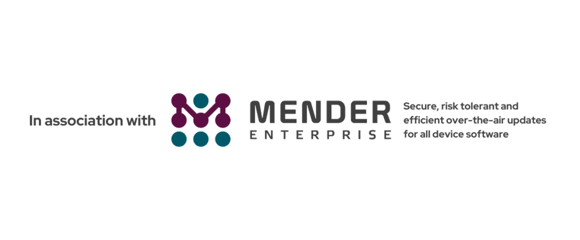The Device Chronicle interviewed Bernie Kim CEO of the tQCS limited, a very experienced IoT executive, to get his perspectives on innovation and disruption in IoT connectivity and what kinds of opportunities OTA software updates offer. tQCS Limited is a leading IoT services provider with its headquarters in Hong Kong, serving Asian markets including but not limited to Japan, Korea, China and Vietnam.
Dawning of new era for IoT connectivity
Bernie begins by observing that before the era of IoT, devices were really “disconnected”. Even if some had a semblance of connectivity and there were no really significant information flows to anywhere. “There may have been data but there was no further transmission of the data for interesting re-uses.” Bernie shares the example of door alarms installed in the domestic market in South Korea. “With these door alarm devices, the householder could automatically open and lock doors with Bluetooth for example. So some advancement there but there was no real connectivity. The home owner would have to be physically there. In large apartment blocks if the batteries on these alarms were to run out, then for safety the doors have to be left open. This was creating headaches for the property managers.”
Bernie believes that IoT connectivity has changed everything. The technology provides both constant and cumulative data, and then the opportunity for data mining. There is accessibility, the availability of new cloud services, almost ubiquitous data with huge and very powerful computing. Computing approaches that include parallel computing and the emerging quantum computing. “So the power increases for analytics.” When IoT connectivity and data analysis comes together, then this becomes really meaningful. Bernie says “We are living in a very interesting era witnessing the transition from the “stone age” of devices operating individually on their own in silo, to devices in concert in mesh networks.”
IoT connectivity use cases
tQCS Limited serves the defense, industrial and medical sectors. Bernie sees a lot of interesting hardware in the embedded world. He notes that South Korea just like Israel benefits from a defense footing where large funding from the government goes into creating interesting experiments in the use of IoT connectivity and AI technologies for defense projects. This advanced technology then cascades into the private sector and on to benefit consumers in a wide variety of new applications. South Korea creates futuristic military weapons and installs these devices on the frontline for the purposes of national security. One example of this advanced technology is the autonomous sentry machine gun. This gun placed on the frontline based on radar and LDOS sensors are intelligent enough to analyse movement patterns, looking for human body temperature, and if an individual is identified on the frontline in the no go zone, the system looks for a secret password from that individual, if no password is forthcoming than it fires a warning shot followed by a second shot. These IoT connectivity and AI technologies from defense come into private industry and society. “The citizens are now comfortable with device connectivity, they assume that devices are connected to systems and control units.”
Bernie talks about a “primitive” form of AI combining with IoT connectivity. He cites a use case from traffic light control in Seoul. There is programmable logic in PLC for embedded devices in traffic lights and the AI self learns. Based on traffic volumes, it can forecast and respond to traffic before it happens and it controls to create the optimal flow of traffic. It saves the driver 30 minutes of commuting per day. The AI mines the data and makes useful forecasts with an analytics engine. There are typically 2 use cases in action today. Functions of the AI use if/then case statements; and the advanced form of AI, the data is re-mined to make a whole new logic itself and create a new pattern rather than a pre programmed pattern.
IoT connectivity not just for the elite companies
Bernie embraces the application of advanced technology and believes it is not longer for the elite organisations. The cost and accessibility is coming down through open standards. Bernie observes the transition over the last 5 to 6 years from proprietary technologies to open technologies based on open standards that can be easily integrated and moved away from if necessary. Bernie points to the automotive sector where Redbend as a proprietary software became dominant through subsequent acquisitions by Harman and Samsung. It was a good technology at the time before 2015 when devices were weak from a connectivity standpoint. But the times have changed and the devices have strengthened. Bernie says the customers in automotive want standard, scalable and extendable software. “They have had difficulties in getting out of the locked in models and moving away from legacy software.”
Where will the action happen in IoT connectivity?
Who will control the data analysis in IoT? Bernie responds to this question by saying there is still debate on this and it depends on the commercial interests of the companies in many cases. He takes the example of home automation where there is competition for control ownership between large players with different perspectives depending on the hardware and software they provide to the household. TV providers see OTT as the medium of control. Google and Apple see a home pod as the way to control the devices. For white label goods manufacturers, the refrigerator has to be the control unit as it is almost ubiquitous.
Open standards in IoT connectivity are key
Standardisation on the protocol is very important for Bernie. “No one giant company can do it all alone.” Bernie believes that the companies with the software power for standardisation will win. This is in the hands of the open source base and they will have to cope with ever changing threats with security. The fundamentals are standardisation and openness. If companies use open source then they are getting support from hundreds of thousands of developers who will help close the code loop and find the solution faster. The strategic mistake is that often by culture, many Asian companies want to own the technology and the moment a company makes the technology proprietary is the moment they fall behind the market. Companies may be worried about security risks with open source codes but as Bernie reassures “they are not all there to hack you, 10 good hackers will close the loop on one bad hacker.”
Mender.io for the masses
For Bernie, Mender.io makes OTA software updates for IoT devices accessible to masses of companies. OTA software updates have moved from the elite. Mender makes it accessible, scalable and secure. So many groups can utilise IoT connectivity without feeling intimidated by the technology. “Nowadays, any hardware product a company wants to create needs to have connectivity, for newcomers they need to have accessibility to this new technology in a fast way to get to market. Mender for OTA software updates can be easily integrated with a hardware platform so the customer can move faster. They don’t have to spend time and resources on development and developers to build an OTA software updates solution, when there is a partner who has already built it.”
OTA software updates have a bright future
Bernie says the OTA software updates market is one of the brightest out there. “Look at Tesla, more and more companies are looking to emulate them. Apple and Hyundai are working together on SOTA. Bernie concludes: “The standardisation protocol is very important, customers want to feel that they are not locked-in to one vendor in one way. Everybody can own and use OTA software updates and Mender is an affordable and scalable lubricant for the manufacturers and software companies to be able to introduce their technologies with the IoT built in.”
We wish Bernie and his team well as they work to help their customers be successful in IoT.
Find an article with an IoT expert on OTA software updates and CI/CD workflows.

